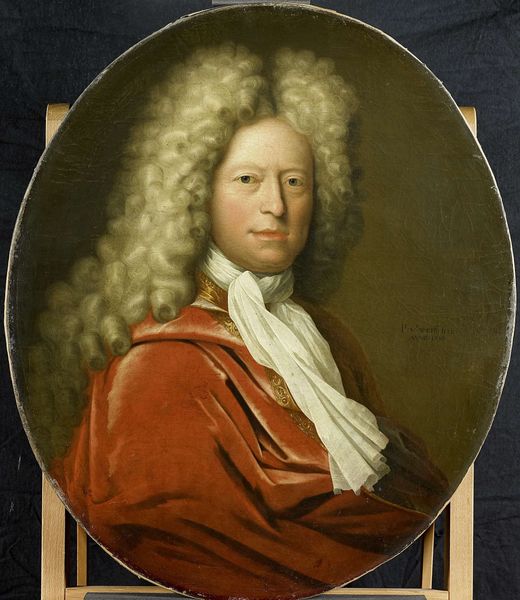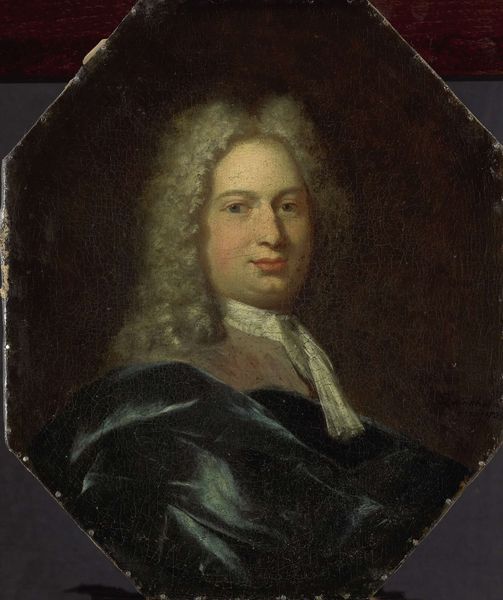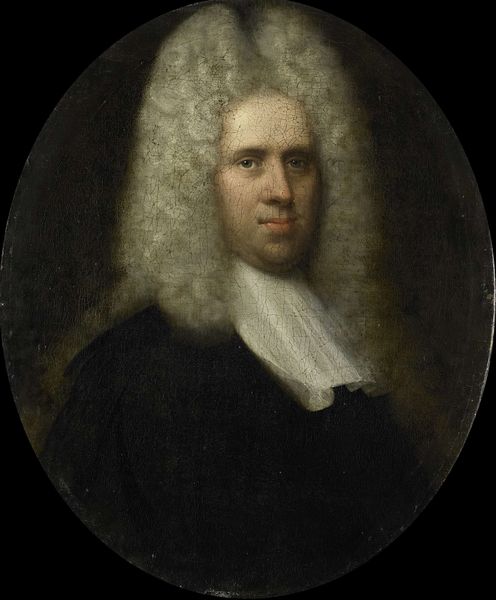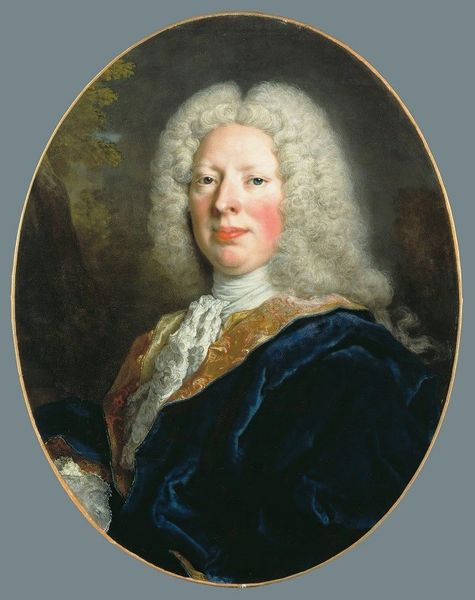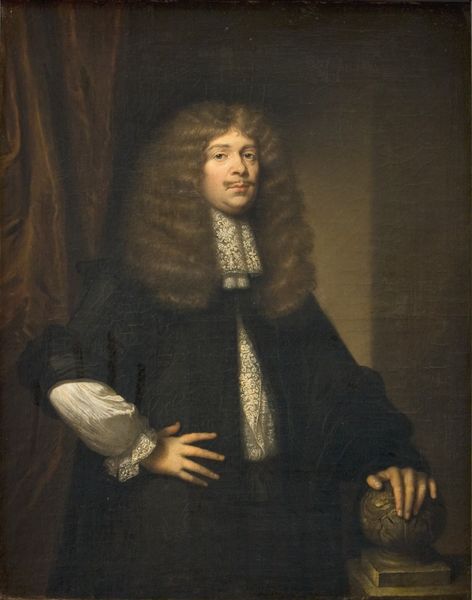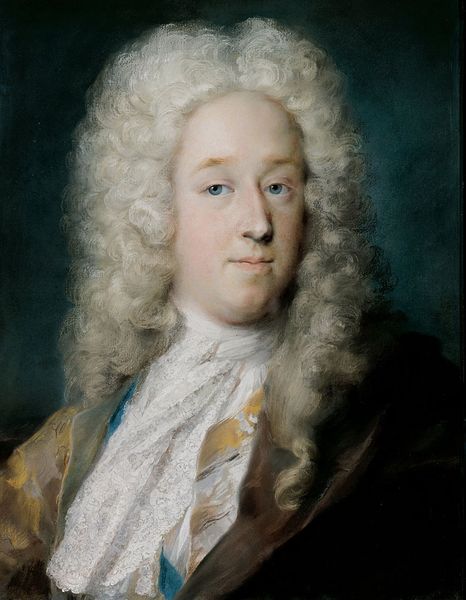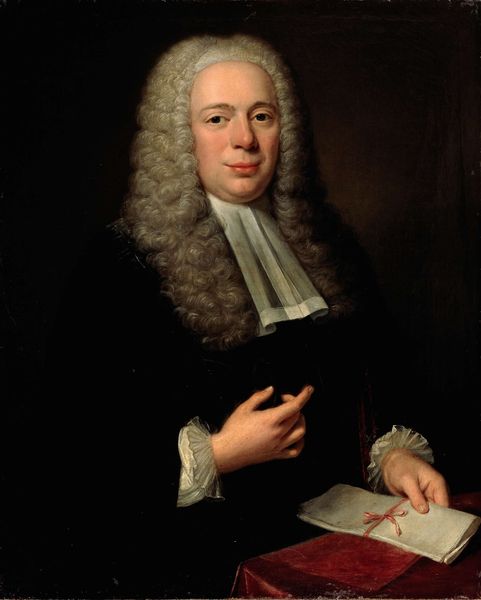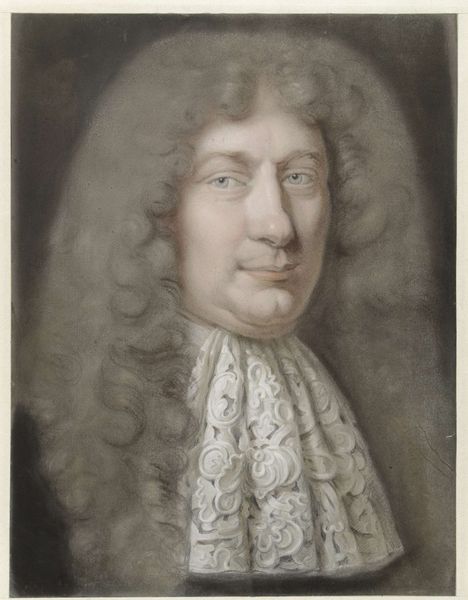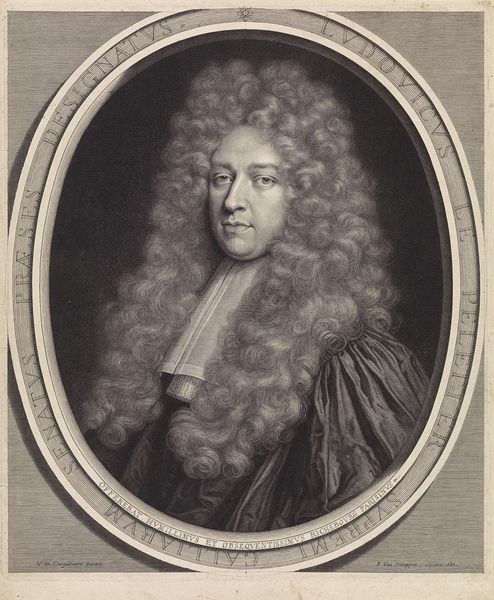
oil-paint
#
portrait
#
baroque
#
oil-paint
#
history-painting
Dimensions: height 82.5 cm, width 65.5 cm, depth 9.5 cm
Copyright: Rijks Museum: Open Domain
Curator: Before us is Arnold Boonen’s “Portrait of Pieter van de Poel (1654-1710)," painted sometime between 1690 and 1729. It's quite a striking Baroque piece. Editor: My immediate reaction? Overwhelming. The texture is all consuming. Look at the meticulous curls of that wig; they’re almost cascading off the canvas. Curator: The wig is certainly a statement, isn’t it? Van de Poel was painted in his finery: note the sumptuous blue velvet coat, and he holds correspondence sealed with what is likely his own family crest. The painting can be interpreted as an explicit presentation of elite identity and patriarchal authority. Editor: Absolutely. The light is exquisite, focusing on the central planes. Observe how it glazes over the velvet, giving it weight and depth. It emphasizes his powerful bearing, contrasting his confident gaze with the papers he holds. Do you note the artist's ability to create volume simply by juxtaposing tonal contrasts? Curator: Boonen was working during a fascinating time of socio-political flux. Think about the Dutch Republic solidifying its mercantile power. Portraits of this kind affirmed the sitters' participation within networks of economic and social control, particularly amidst nascent capitalist infrastructures. Van de Poel looks self-assured. He knows his place, and the place of those like him, in this shifting power structure. Editor: Yet there is an air of gentleness, too. That careful modelling and layering of pigment in the face suggests that while presenting a personage, the aim was to evoke a palpable, lived essence. Consider his gaze. Direct, but also surprisingly candid, as if the weight of such heavy drapery might only be survived with humility. Curator: Yes, it’s those subtle tensions that make this portrait particularly compelling, wouldn’t you say? It's more than just documenting wealth and power, it's about embodying the specific historical and cultural moment within shifting ideological contexts. Editor: And of course the rendering itself displays such accomplished ability! Regardless of social readings, or philosophical deconstruction, Boonen had, as they say, *technique*. Something not to be diminished! Curator: Agreed. Understanding both form and context enriches our experience. It's a testament to the enduring relevance of studying portraiture across periods. Editor: A perfect example of why museums matter. A picture being worth a thousand words indeed.
Comments
No comments
Be the first to comment and join the conversation on the ultimate creative platform.
